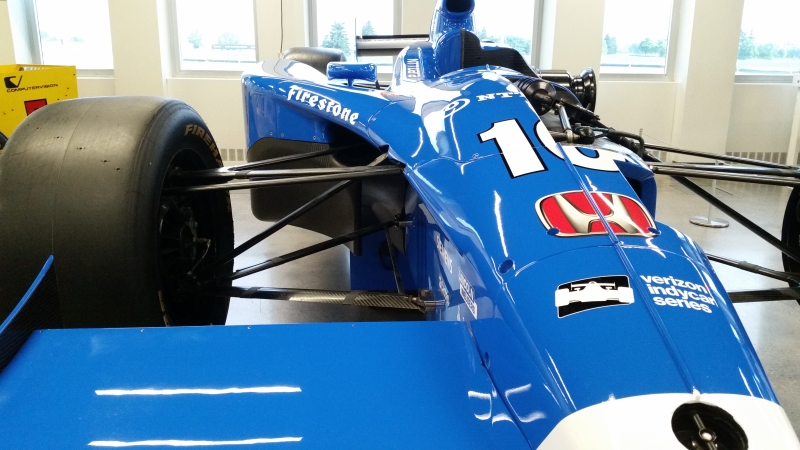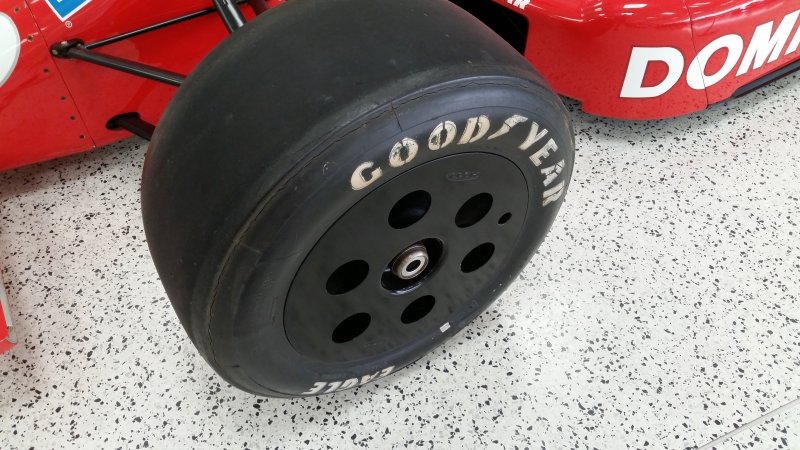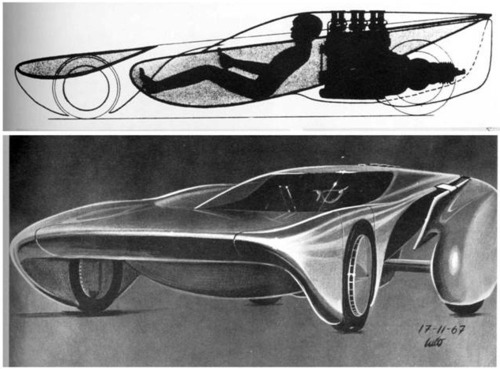 05-27-2019, 08:59 PM
05-27-2019, 08:59 PM
|
#31 (permalink)
|
|
Master EcoModder
Join Date: Jul 2011
Location: Ann Arbor, Michigan
Posts: 4,210
Thanks: 140
Thanked 2,824 Times in 1,981 Posts
|
__________________
George
Architect, Artist and Designer of Objects
2012 Infiniti G37X Coupe
1977 Porsche 911s Targa
1998 Chevy S-10 Pick-Up truck
1989 Scat II HP Hovercraft
You cannot sell aerodynamics in a can............
|
|
|

|
|
The Following User Says Thank You to kach22i For This Useful Post:
|
|
 Today Today
|
|
|
|
 Other popular topics in this forum...
Other popular topics in this forum...
|
|
|
|
 05-27-2019, 10:25 PM
05-27-2019, 10:25 PM
|
#32 (permalink)
|
|
Moderator
Join Date: Feb 2012
Location: Urbana, IL
Posts: 1,939
Thanks: 199
Thanked 1,807 Times in 943 Posts
|
Quote:
Originally Posted by woodstock74

Absolutely, there's very little to be learned looking at race cars. There is only one quest in racing, that's downforce. Downforce produces drag.
|
I wouldn't say that at all. Yes, there's one goal in racing, but it's competitive advantage. And that can take the form of decreased lift or decreased drag, or some combination of the two, and all within a (usually very) narrow set of rules.
Stability is also a primary concern of OEMs making passenger cars and trucks, based on how many pages are devoted to it in the various textbooks I've been reading, and stability is directly influenced by lift. Manufacturers have learned a lot from racing cars, and over the past few decades street car designs have reduced both drag and lift. Something like the Prius, which has C d 0.24 and overall negative lift was unthinkable in the 80s in a production car. Heck, even modern Ferraris have drag coefficients in the 0.35 range with hundreds of pounds of negative lift at speed.
And there's room for improvement, where race cars still have an edge. Look at the nicely ducted radiator outlet on the 1999 Dallara IRL chassis, for instance:

Or the flattened control arms in the 2017 IndyCar suspension:

Or these wheel discs on the 1990 Lola 500 winner:

There's still lots we can emulate on race cars.
|
|
|

|
 05-28-2019, 01:04 AM
05-28-2019, 01:04 AM
|
#33 (permalink)
|
|
Master EcoModder
Join Date: Aug 2012
Location: northwest of normal
Posts: 29,344
Thanks: 8,347
Thanked 9,110 Times in 7,523 Posts
|
Quote:
|
Originally Posted by ChazInMT*
This I thought was ecomodder, not increasedownforcemodder. One must keep in mind that the basic principle of low drag is to NOT disturb the air you are plunging through.... To that end, having something stick up can only make air move more. If you want to decrease drag, you need to change the basic shape of the thing being pushed through the air.
|
Anything that deviates from The Template. Right?
Once you deviate from the ideal (for packaging, cooling, etc.) small-scale features can be used to coax the airflow back into balance.
Quote:
|
Originally Posted by kach22i
Air flowing under the car is very important, just look how Luigi Colani took advantage of it.
|
One of my favorite Colani designs:

* It looks like you posting fell off in 2018. Have you been lurking, or away?
__________________
.
.Without freedom of speech we wouldn't know who all the idiots are. -- anonymous poster
___________________
.
.Impossible is just something we haven't done yet. -- Langley Outdoors Academy
|
|
|

|
 05-28-2019, 09:01 AM
05-28-2019, 09:01 AM
|
#34 (permalink)
|
|
Master EcoModder
Join Date: Jul 2011
Location: Ann Arbor, Michigan
Posts: 4,210
Thanks: 140
Thanked 2,824 Times in 1,981 Posts
|
Quote:
Originally Posted by freebeard

One of my favorite Colani designs:
|
You must have that image on "Speed Dial", I looked for it yesterday but it eluded me.
I will agree with the posters saying do not copy race cars thinking they are low drag designs.
I say we have something to learn from any exercise, which is why I started that Non-Aerodynamic or Un-Aerodynamic car thread.
__________________
George
Architect, Artist and Designer of Objects
2012 Infiniti G37X Coupe
1977 Porsche 911s Targa
1998 Chevy S-10 Pick-Up truck
1989 Scat II HP Hovercraft
You cannot sell aerodynamics in a can............
|
|
|

|
 05-28-2019, 11:33 AM
05-28-2019, 11:33 AM
|
#35 (permalink)
|
|
Master EcoModder
Join Date: Aug 2012
Location: northwest of normal
Posts: 29,344
Thanks: 8,347
Thanked 9,110 Times in 7,523 Posts
|
__________________
.
.Without freedom of speech we wouldn't know who all the idiots are. -- anonymous poster
___________________
.
.Impossible is just something we haven't done yet. -- Langley Outdoors Academy
|
|
|

|
 05-29-2019, 01:15 PM
05-29-2019, 01:15 PM
|
#36 (permalink)
|
|
EcoModding Apprentice
Join Date: Apr 2012
Location: Charlotte, NC
Posts: 134
Thanks: 146
Thanked 110 Times in 47 Posts
|
Quote:
Originally Posted by Vman455

I wouldn't say that at all. Yes, there's one goal in racing, but it's competitive advantage. And that can take the form of decreased lift or decreased drag, or some combination of the two, and all within a (usually very) narrow set of rules.
Stability is also a primary concern of OEMs making passenger cars and trucks, based on how many pages are devoted to it in the various textbooks I've been reading, and stability is directly influenced by lift. Manufacturers have learned a lot from racing cars, and over the past few decades street car designs have reduced both drag and lift. Something like the Prius, which has C d 0.24 and overall negative lift was unthinkable in the 80s in a production car. Heck, even modern Ferraris have drag coefficients in the 0.35 range with hundreds of pounds of negative lift at speed.
And there's room for improvement, where race cars still have an edge. Look at the nicely ducted radiator outlet on the 1999 Dallara IRL chassis, for instance:

Or the flattened control arms in the 2017 IndyCar suspension:

Or these wheel discs on the 1990 Lola 500 winner:

There's still lots we can emulate on race cars. |
Have worked for better than 20 years in motorsports aerodynamics and, while a blanket statement, in the world of the wide-eyed, you'd do well to steer away from racing aerodynamics as the road car is a different beast. Yes, there are some takeaways. So I shouldn't have been so dismissive, but in racing we have vastly different parameters that are often arbitrary, such as technical regulations. The technical regulations carve out the car's shape, dictating the aero devices/methods you use, therefore the cars generated by the technical regulations are by no means optimized aerodynamically (they are optimized for the rules set, however), and therefore it is a very bad idea to look up to race cars as the ideal if working in a vacuum. Current LMP1 regulations intentionally design-in aerodynamic inefficiency as a hedge to keeping some semblance of control, over the long term, of lap time. What you see racing around the track is the embodiment of work-arounds to those technical regulations, nothing more, and are certainly not paradigms of aerodynamic efficiency. There isn't a racing series on the planet that plays homage to aerodynamics. They all have strict regulations that attempt to limit the aerodynamicists job in creating the fastest car to the regulations.
And hence why I'm out to sea when it comes to road car aero. 20 years in racing and all this stuff is new to me. Pretty cool actually.
My $.02
|
|
|

|
|
The Following User Says Thank You to woodstock74 For This Useful Post:
|
|
 05-29-2019, 01:44 PM
05-29-2019, 01:44 PM
|
#37 (permalink)
|
|
Master EcoModder
Join Date: Aug 2012
Location: northwest of normal
Posts: 29,344
Thanks: 8,347
Thanked 9,110 Times in 7,523 Posts
|
Quote:
|
What you see racing around the track is the embodiment of work-arounds to those technical regulations, nothing more, and are certainly not paradigms of aerodynamic efficiency.
|
Bonneville?
__________________
.
.Without freedom of speech we wouldn't know who all the idiots are. -- anonymous poster
___________________
.
.Impossible is just something we haven't done yet. -- Langley Outdoors Academy
|
|
|

|
|
The Following User Says Thank You to freebeard For This Useful Post:
|
|
 05-29-2019, 02:26 PM
05-29-2019, 02:26 PM
|
#38 (permalink)
|
|
Master EcoModder
Join Date: Jan 2008
Location: Sanger,Texas,U.S.A.
Posts: 16,509
Thanks: 24,517
Thanked 7,436 Times in 4,817 Posts
|
racing series
I'd add the Southern California Timing Association venue,at El Mirage Dry Lake,California,Human-powered Submarine competition,National,and,World Solar Challenge, solar racing series, SAE Super Mileage competition,SHELL Eco Marathon,and annual IHPVA speed trials @ Battle Mountain,Nevada. 
__________________
Photobucket album: http://s1271.photobucket.com/albums/jj622/aerohead2/
|
|
|

|
|
The Following User Says Thank You to aerohead For This Useful Post:
|
|
 06-11-2019, 04:45 PM
06-11-2019, 04:45 PM
|
#39 (permalink)
|
|
EcoModding Apprentice
Join Date: Jun 2008
Location: Pittsburgh
Posts: 120
Thanks: 2
Thanked 28 Times in 19 Posts
|
There's a big difference between race cars and road cars. Lets go back 56-52 years about talk about the 1963-1967 Corvette Stingray. The car may have been sleek and beautiful but it had a very serious aerodynamic problem. You see that real pretty front end produced lift at higher speeds. The car was a real handful to drive over 100 miles per hour because the front end got very light due to lift.
Jump ahead to the 1969 Dodge Daytona and 1970 Plymouth Superbird which had Cds in the .28 range. On the track those two cars had a huge advantage at high speed and not because of the sleek nose and the spoiler gaining them down force and aerodynamic advantage, but because of that tall wing in the rear. You see you couldn't spin the car out because as soon as you started to slide the back end out the air would hit the side of the strut holding the rear wing and push you right back to into a neutral air configuration.
|
|
|

|
 06-11-2019, 10:48 PM
06-11-2019, 10:48 PM
|
#40 (permalink)
|
|
EcoModding Lurker
Join Date: Jun 2012
Location: waterloo, Ontario
Posts: 24
Thanks: 0
Thanked 4 Times in 4 Posts
|
vgs on trailers
Quote:
Originally Posted by aerohead

I know that what they promote is implied in the animation.I'm not sure that what actually happens is in agreement with the facts.
Details such as this would require a 'full-scale',full Navier-Stokes equation, numerical analysis,which currently requires about 2-days run time on a supercomputer.
Again,Hucho ran the Volkswagen full-scale climatic wind tunnel for 10-years,and he tested these sorts of things.He never saw anything lower drag ,except for box-cavities and boat tails.
I'm not calling Air-Tabs a 'liar',but I'd want a more rigorous investigation.
They haven't altered the frontal area,nor pressure at the separation line.I'd like an explanation for how they achieve a higher base pressure without some sort of reversed step.
|
We did some testing of Air-tabs on a 35 foot travel trailer using an aircraft engine blowing air down the side of the trailer and both tufts and smoke. Without the airtabs the tufts or ribbons just snapped around everywhere, tying themselves in knots behind the trailer, and the smoke curled tightly around behind the trailer. With the airtabs about 6 inches from the back of the trailer the tufts/ribbons stood straight out behind the trailer with virtually no flapping, and the smoke went back about 15 feet before starting to swirl. Wind speed was in excess of 60MPH down the side of the trailer. (about 12 feet? from a wall) I'd say they do pretty much what the information from airtabs claims they do. They sure keep the back of the trailer clean.
|
|
|

|
|
The Following User Says Thank You to csnyder For This Useful Post:
|
|
|